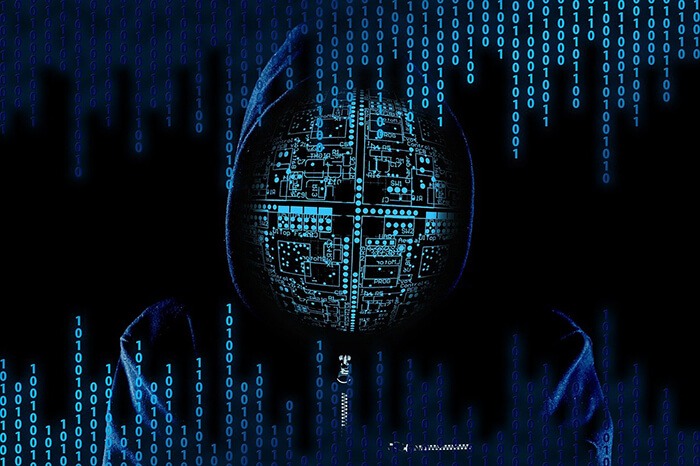Thank You!
A confirmation latter has been sent to your email. Check your inbox.


"The price of light is less than the cost of darkness.” In this digital age, cybersecurity is an intelligent investment in protecting people, institutions, and their digital lives. This new age digital era is making space for an abundance of new technologies and innovations across many sectors, including financial institutions. With the rise of cyber threats, including phishing, malware, and ransomware, protecting sensitive financial data are more important than ever. Financial institutions can reduce the risk of data breaches and cyber-attacks by investing in cybersecurity measures such as firewalls, encryption, and multi-factor authentication. Financial institutions can, thus, build digital resilience and protect their client's financial information from cyber threats by taking a proactive approach to cybersecurity.The significance of cybersecurity for financial institutions cannot be overstated.
Building robust digital resilience has become imperative as financial transactions increasingly shift towards digital platforms. The stakes are high, as the financial industry serves as a cornerstone of our global economy, handling vast amounts of sensitive data and facilitating critical transactions. To safeguard the trust and integrity of financial systems, institutions must embrace cybersecurity as an essential pillar of their operations. A proactive and comprehensive cybersecurity strategy is paramount, from protecting customer information to preventing fraud and thwarting malicious attacks. Financial institutions mitigate risks and bolster their reputations by fortifying their defenses, ensuring the preservation of trust and confidence in an era defined by digital interconnectivity.
Financial service organisations are the prime targets of cybercriminals. It is a form of malicious software that encrypts personal information, prevents you from accessing files and holds data until a ransom is paid.
The automated and persistent attack threats on AI and ML tools are increasingly furious with the growing evolutions in these tools. Adversarial attacks and data poisoning, model theft and model inversion, and systematic biases or unfairness in the results from machine learning algorithms are some common ways cybercriminals use to manipulate AI systems.
The reliance on cloud services is increasing in financial services institutions. By obtaining access to vulnerabilities of cloud systems, cyber attackers target sensitive information, which they then alter, steal, destroy, or use to gain a reverse pass to the organisation’s internal networks.
An insider threat is a potential danger posed by employees or trusted individuals with privileged access to sensitive information and systems. It becomes a lurking danger and a riddle to solve—a multidimensional enigma that demands constant vigilance, advanced tools, and a collective commitment to protect the financial institution from within. In addition, studies reveal that the number of insider threat incidents rose by 44% worldwide between the years 2020 and 2022.
Rapidly sophisticated techniques and messaging have made phishing attacks more influential and persuasive than ever. It can be described as a digital creature harnessing the power of deception to infiltrate financial institutions. This scam includes tricking users into divulging sensitive data by sending fraudulent communications that appear to come from a reputable source.
The objective of a supply chain attack in a financial institution is often to gain unauthorised access to valuable financial data, compromise transactions, or exploit sensitive information for financial gain. Cybercriminals often explore supply chains to exploit the weakest security link by compromising software, hardware, or other system components before information gets delivered to the end user.
Blockchain security is one of the finest digital revolutions and has positively impacted financial services companies' operations. Major security threats concerned with blockchain technology occur in ways such as manipulating the network by altering transaction history, double-spending cryptocurrencies or excluding valid transactions from being confirmed, Distributed Denial of Service (DDoS) Attacks, and exposure to smart contract vulnerabilities.
Cryptojacking is a cyber-attack where hackers use a victim's computer to mine cryptocurrency without their knowledge or consent. Financial institutions are particularly vulnerable to this type of attack because hackers can use the institution's computing power to mine large amounts of cryptocurrency resulting in significant financial losses for the institution.
In the rapidly advancing digital era, the role of cybersecurity in the financial industry has taken centre stage. Financial transactions and services have become more intertwined with technology, and the potential risks and vulnerabilities have multiplied, necessitating a robust cybersecurity framework. By leveraging IT solutions, financial institutions can better detect, prevent, and respond to cyber threats, ensuring the security of their client's financial information by analyzing and mitigating risks at the earliest. These solutions can include firewalls, intrusion detection systems, and security information and event management (SIEM) tools.

Financial institutions bear the responsibility of safeguarding sensitive customer data, ensuring the integrity of transactions, and thwarting the ever-evolving cyber threats that lurk in the digital realm. By embracing innovative cybersecurity measures, such as advanced encryption algorithms, sophisticated intrusion detection systems, and rigorous authentication protocols, financial organizations demonstrate their commitment to protecting their own interests and their customers' financial well-being and trust. Proactive cybersecurity measures not only shield institutions from potential financial losses and legal ramifications but also preserve the industry's reputation and credibility in the eyes of stakeholders. In this era of relentless digital advancements and sophisticated cyber threats, the integration of cybersecurity into the very fabric of the financial industry is not just a strategic choice but an absolute necessity for sustained success, resilience, and trust in an interconnected world.

In an era where digital banking and fintech services are expanding rapidly, the need for robust cybersecurity in financial institutions has never been greater. With increasing phishing attacks, ransomware threats, and insider risks, securing financial data and maintaining customer trust is crucial. Implementing strong cyber risk management frameworks, adopting multi-factor authentication, and staying ahead of evolving threats ensures long-term protection. At Sumcircle Technologies, we empower financial organizations with cutting-edge solutions that align with cybersecurity regulations and industry best practices—safeguarding their reputation and digital assets in today’s interconnected world.
Our expertise spans a diverse and proven tech stack, carefully employed to build solutions that meet evolving business needs with precision and reliability.
BACK END
FRONT END
CONTAINERIZATION
AUTOMATION
CI/CD TOOLS
MONITORING
PROGRAMMING LANGUAGES
FRAMEWORKS
LIBRARIES
CLOUD SERVICES